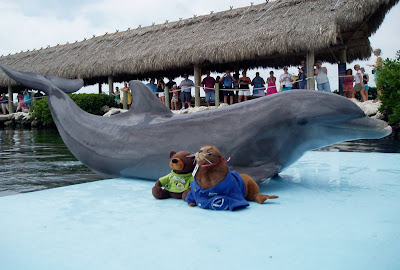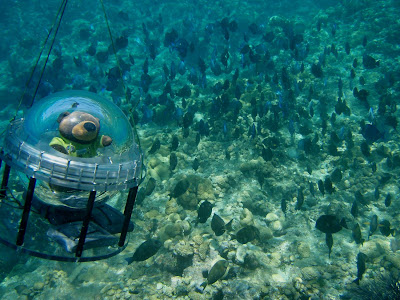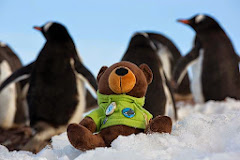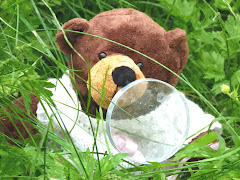Hi Steve here. Still no news from Ed, so I am adding this post for him. When Ed was visiting the Florida Keys, he popped back over to England for the 8th May to teach about One World One Ocean. This is what happened, Steve
Hi all
I am back in the UK to spread my message to a group of children at a special course run by the Able Pupil Enrichment Programme.
My buddy Steve runs wildlife courses for this programme and he had arranged this course for me to teach children about my message.
We stated with a quick true or false quiz about the oceans. In the language of the kids themselves, the questions were pretty random touching on many things they would learn about during the day about oceans, sea water, marine wildlife and conservation issues.
I then told the kids about my message and why I have been travelling the world’s oceans. I wanted the kids to appreciate that there is only one ocean that links us all where ever we are in the world.
The oceans connect us and also control our weather and climate so we are all part of the same ocean system. I asked the kids to draw a line on the map linking together different locations.
They figured out that because the line eventually joined with the same point they started that the oceans were all linked. We then discussed how some animals can travel the world’s oceans like myself, but the movement of many animals are restricted by things such as land, water temperature, salinity (saltiness), weather depth and pressure.
That was quite a heavy topic so we then did a sound quiz, I played some sounds and the children had to guess what they were (from a list).
These Arctic seals, humpback whales, blue striped grunts (fish) snapping shrimps, a ship and an underwater earthquake. We then discussed the sounds and the reasons different animals make sounds.
I shared some of my adventures about the oceans and marine wildlife from UK beaches and around the world and explained how each is just as important and fascinating.
We then looked at marine litter. We discussed where marine litter might come from and the various ways it could end up in the ocean.
I spoke about my experiences in the Hawaiian Islands with Fred the Monkey and what he taught me about the plight of the Laysan Albatross.
I am sure you will remember that Fred gifted me the necklace I wear to remind me and everyone I meet about their terrible plight.
My buddy Steve helped me to create an activity where the kids could learn about this. In this activity the children divided into groups of three, two children would play the role of parents one would be the chick.
The adults collect food from the surface of the water at night to feed their chick. They accidentally collect plastic litter too which they feed to their chick. If the chicks eat too much plastic they may die.
One at a time, the children playing the role of the parent birds collected a card. Each card represented an item of food or a piece of plastic litter such as a bottle top, fishing line, tooth brush, disposable lighter etc.
Each piece of litter was recorded on their sheet. We then discussed, depending by how much plastic they have fed to their chick, wither they thought their chick would survive
The children expressed that they were surprised that the marine litter included many everyday items such as tooth brush, disposable lighter, golf tees and plastic toys.
We also spoke about other problems that also play a part in the survival of these albatross chicks, such as paint flakes on the island from buildings. These flakes of paint contain lead, which is poisonous, which may be eaten by some of the chicks.
The second major topic we investigated was global warming and climate change. We discussed the difference between weather and climate. We also looked at my experiences about how ocean temperatures are monitored using satellites and under sea detection equipment that I learned about while I was at the Cordell Banks National Marine Sanctuary back in January.
We discussed how ocean currents transport warm and cold water around the oceans which creates our climate. It is the ocean currents, such as the Gulf Stream that give the UK such a pleasant climate compared to other countries on the same latitude. Global warming may affect how these ocean currents work which could result in big changes in the future world’s climate.
We looked at how global warming is killing coral reefs and disrupting food chains. This includes the UK where seabird chicks are dying because of the changes sea temperature rises are having on marine food webs and the food they eat.
I also told the children about another major problem, acidic oceans. The children found out about the dangers faced by marine animals in this acid oceans experiment. I explained how acid oceans are caused by increased amounts of carbon dioxide absorbed by oceans.
Earlier in the day we put a seashell in a jar of water and another in vinegar. Every now and then we would check to see what was happening.
The children were asked to suggest what they thought would happen and how long it would take.
After an hour, much of the seashell had dissolved. I explained that it’s not this bad in the oceans yet, but they could see how even a weak acid such as vinegar (which many of them eat on their chips) can cause such damage to crates with hard shells.
We finished off by discussing ways that we all contribute to global issues such as climate change. I explained how even my buddy Steve and myself are contributing to climate change just by every day living. However, I also explained that there are many ways that we can reduce the amount of impact we have on the oceans.
We asked the children to think about all the ways they might have an impact on the oceans and to make a list.
Then, next to each thing on the list, we asked them to write down how they can do things differently. Many of the things on the list included, not turning the TV or computer off when they had finished with it. One child admitted to leaving their bedroom light on all day while they were at school.
The children then signed a pledge to me, to promise that they would try to do all the things they could from their list to help the oceans. They would take this home and stick it on their bedroom wall to remind them. I then gave them all a special certificate for working so hard during the day and coming up with such great ideas and suggestions. I really enjoyed working with these children and I hope to be able to run another course again soon.
Bye for now, I must get back to Florida for a Coral Reef Classroom Field trip with Sugarloaf Middle School.












































